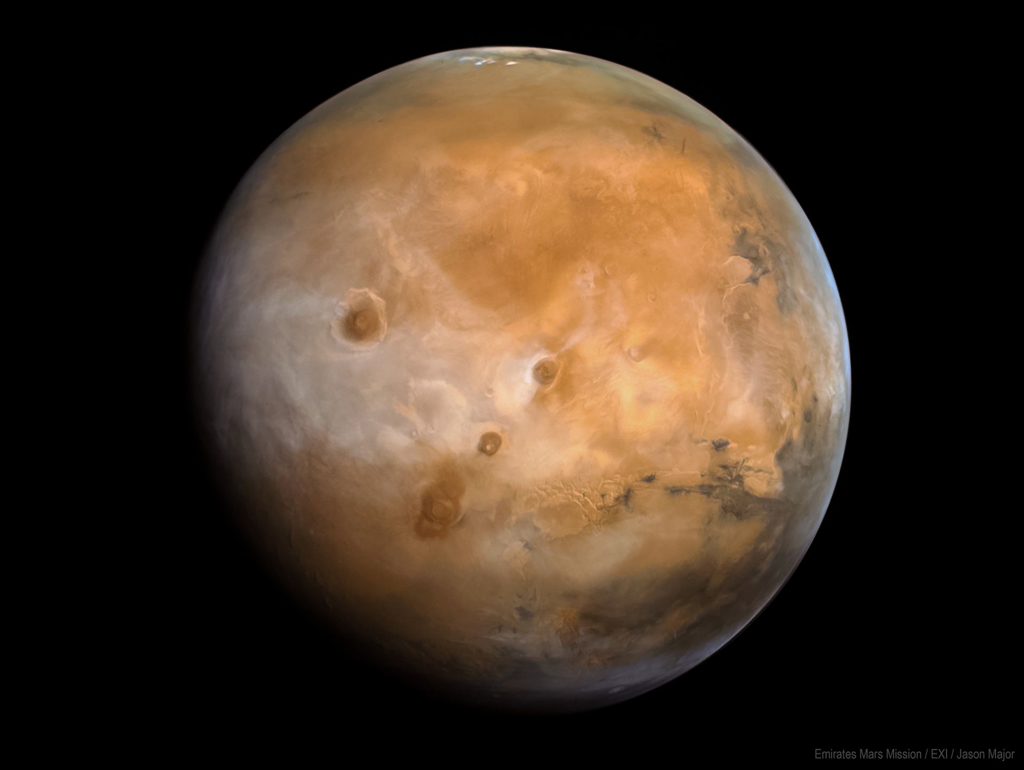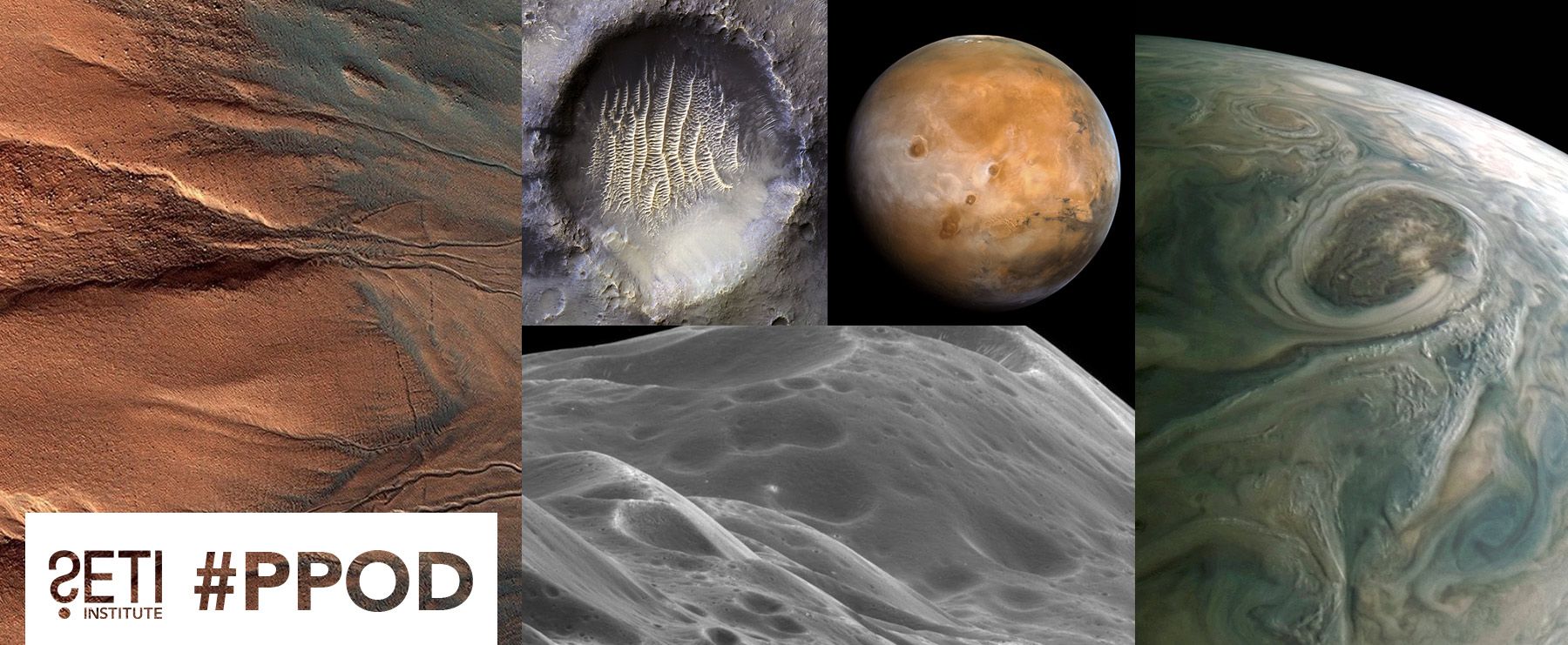
Planetary Picture of the Day
Week of January 24, 2022
We made it through January! Relax and enjoy some images from around the solar system.
Monday, January 24, 2022
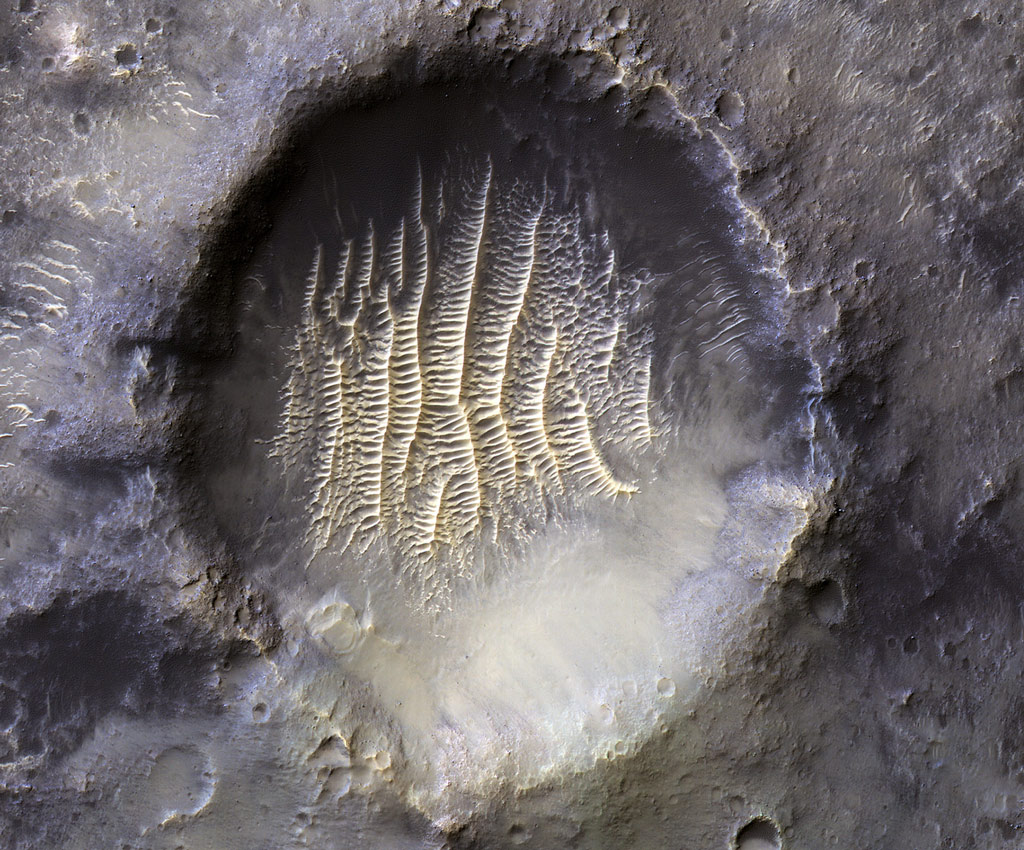
NASA/JPL/University of Arizona
A Prime Meridian for Mars
This dune-filled crater, called Airy-0 (zero), defines 0° longitude for the Red Planet, much like the location of the Royal Observatory Greenwich in England does on Earth. The crater is about 43 kilometers in diameter. This enhanced-color look at the crater comes from the Mars Reconnaissance Orbiter.
Tuesday, January 25, 2022
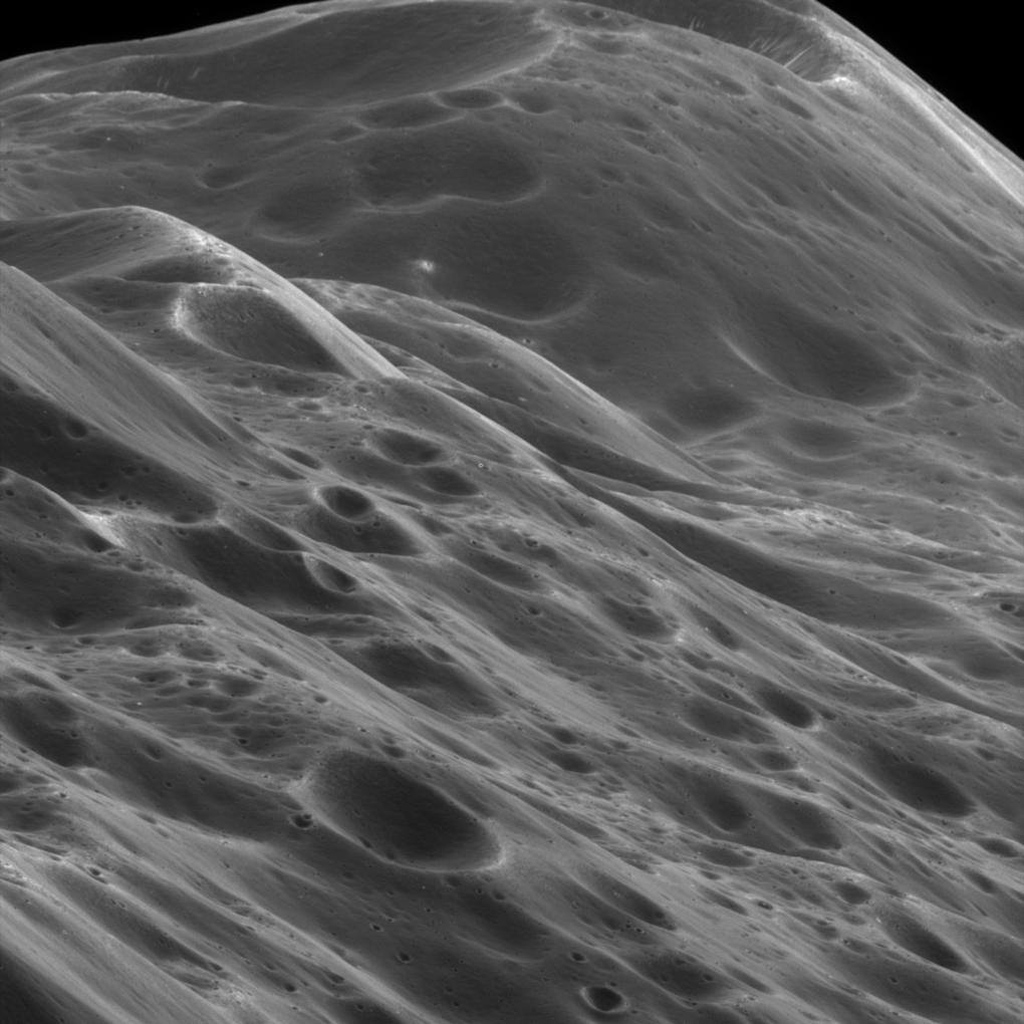
Credit: NASA/JPL/Space Science Institute
Iapetus, moon of Saturn
Iapetus has a diameter of a little under 1,500 kilometers and was discovered in 1671 by Jean-Dominique Cassini. This stunning close-up view shows mountainous terrain that reaches about 10 kilometers high along the moon's equatorial ridge. Taken by the Cassini spacecraft almost three and half centuries later on Sept. 10, 2007.
Three of the white oval storms known as the “String of Pearls” are visible near the top of the image. Each of the alternating light and dark atmospheric bands in this image is wider than Earth, and each rages around Jupiter at hundreds of miles (kilometers) per hour. The lighter areas are regions where gas is rising, and the darker bands are regions where gas is sinking. Juno acquired the image on May 19, 2017, at 11:30 a.m. PST (2:30 p.m. EST) from an altitude of about 20,800 miles (33,400 kilometers) above Jupiter's cloud tops.
Wednesday, January 26, 2022
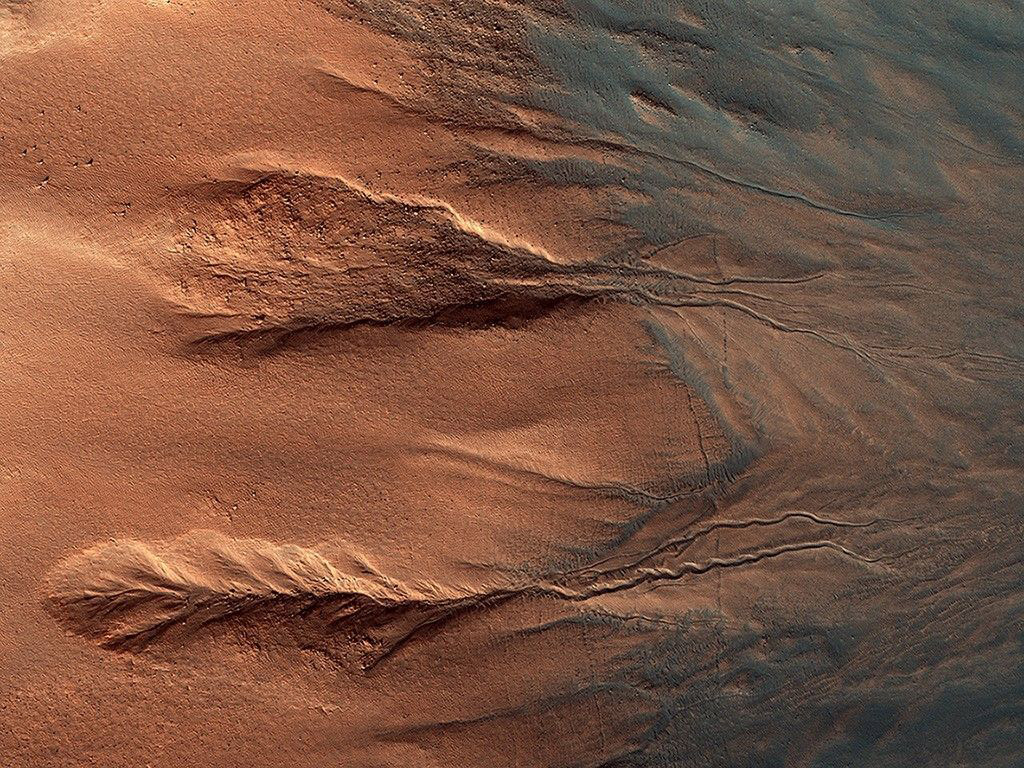
NASA/JPL; MRO mission/HiRISE Team, The University of Arizona.
For more details, see: https://buff.ly/357A3d2
The Contrasting Colors of Crater Dunes and Gullies
Gullies are relatively common features in the steep slopes of crater walls, possibly formed by dry debris flows, movement of carbon dioxide frost, or perhaps the melting of ground ice.
Thursday, January 27, 2022
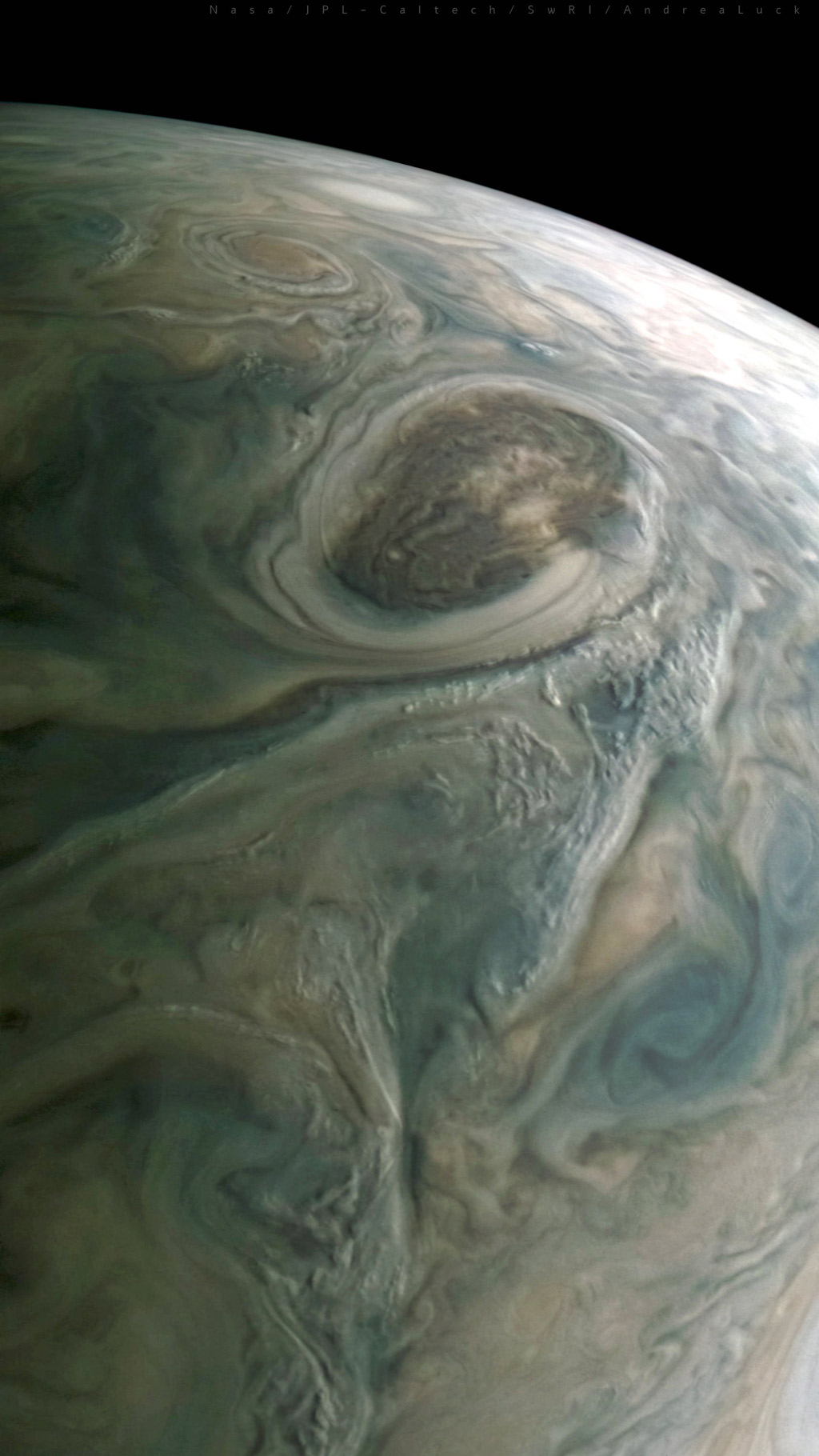
NASA/JPL-Caltech/SwRI /MSSS/AndreaLuck
Full Size: https://buff.ly/3rFZ0UJ
Jupiter by Juno
Jupiter storm (Jet N4) in the Northern Hemisphere. Taken by JunoCam aboard NASA's Juno spacecraft from an altitude of 5,432 km on January 12, 2022.
Friday, January 28, 2022
Credit Image: Emirates Mars Mission / EXI / Jason Major
Mars' Olympus Mons
Olympus Mons from image data acquired with the EXI camera on UAE's Hope Mars Mission on August 30, 2021, with the entire Tharsis region visible, including the nearly 22 kilometers high Olympus. The mountain is a shield volcano with a diameter of 624 kilometers. Oriented so north is up.

